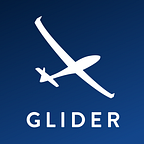Finding, selecting, and hiring the right talent for an organization is called the hiring process. This process requires a well-planned strategy along with systematic thinking to make the process successful with some steps involved. The major 3 steps of hiring are screening, assessment, and selection.
Stages of the hiring process:
1. Identifying hiring need:
Upon new projects’ arrival, it is very important to analyze the short-term and long-term hiring needs based on the availability of the resources. Identifying the hiring needs is the initial step and it requires the involvement of both human resources and the decision-makers.
2. Planning:
Creating a road map for the upcoming hiring process will make a good understanding of where the company stands along with the needs of the company and also the efficiency too increases. It is also important to take care of the event dates and other technicalities.
3. Job description creation:
Job description creation is one of the major steps in the hiring process as it is the first thing the job seekers look into. Job descriptions should include details about the company, job requirements, and roles & responsibilities. Make sure that you have mentioned the eye-catching key points about the position you are offering as well as the benefits you are providing the new joiner.
4. Recruiter and hiring manager meeting:
A meeting between the hiring manager and the recruiter happens before posting it on the online job portals. The main purpose of the intake meeting between the hiring manager and recruiter is to have a grasp of all the needs and expectations from the new hire.
5. Job openings posting & promotion:
Posting job openings online is the best way to let the job seekers know about the openings in the company and helps in spreading the news with the known persons who are looking for an opportunity or job change. Along with the company’s job portal, it is also better to post on other job portals and social media.
6. Application screening:
Here comes the next level that is the screening of the applications submitted by the aspirants. Applicants submit the applications along with the cover letter and other documents (optional) while applying for the job and the recruiter or the hiring manager screens each application concerning the job requirement and rejects which are not a match.
7. Interviews.
You should determine how the interview process is going to look like. Whether you will be conducting a live or a phone interview, how long will the interview last, and what type of knowledge will you be examining during the interview. You should create a list of interview questions before the interview or you can even automate it using Glider’s AI-based hiring tool which will take care of all the hiring process and give the final result.
8. Applicant talent assessment:
Applicant talent assessments are tests designed to help employers evaluate the skills of the applicants. Skill assessment test helps companies to ensure that the candidate has the required skills to successfully perform their jobs and justify the selection. While designing an assessment make sure that all skills and essential knowledge for the role are mentioned or stay calm and outsource this task to Glider, who helps in assessing the candidates with the required skills and other aspects and make sure that the candidates make the best fit for the organization.
9. Background check & Reference checks.
Background and reference checks refer to a recruiting process method used by hiring managers/recruiters to get more information about a candidate by contacting his/her previous employers, schools/university, etc. Conducting a reference check helps recruiters not only check the validity of information but also make decisions based on a conversation with a person that used to work with your potential future colleague.
10. Pre-employment testing.
Pre-employment assessments are simple, quick, and fun for recruiters, interviewers, hiring managers, as well as candidates. Generally, it takes too much time and effort for a recruiter or hiring manager to interview each candidate and select the best person for the open position.
11. Decision.
Finally, after all the assessments and validity checks, it is decision time! Evaluating which candidate will be the best cultural fit while satisfying all requirements is never easy. But when all the previous steps are respected there is no space for uncertainty.
12. Job offer.
A formal job offer letter/email is a document which employer sends to the selected candidate to offer them a job for a certain position at their company. Making all the aspects of a job as clear as possible to the new hire is extremely important for both candidates and companies. This is why is necessary to send a formal job offer letter/email to your chosen candidate.
13. Hiring.
When the candidate accepts your offer and signs (online/offline) the contract or offer letter, then the candidate is hired by your company.
14. Onboarding.
More and more companies are starting to understand the importance of good onboarding. Even more so, once a company hires new talent, some believe this is only when the job starts. Onboarding the candidates means introducing them to the culture and the people as well as giving them all important information and training to be able to excel at their job as soon as possible.
Still, you are following the same old traditional process of hiring? If yes, then signup for the free trial of the modern hiring process which is AI-based and unbiased and helps you in hiring the best-skilled talent to your organization.
